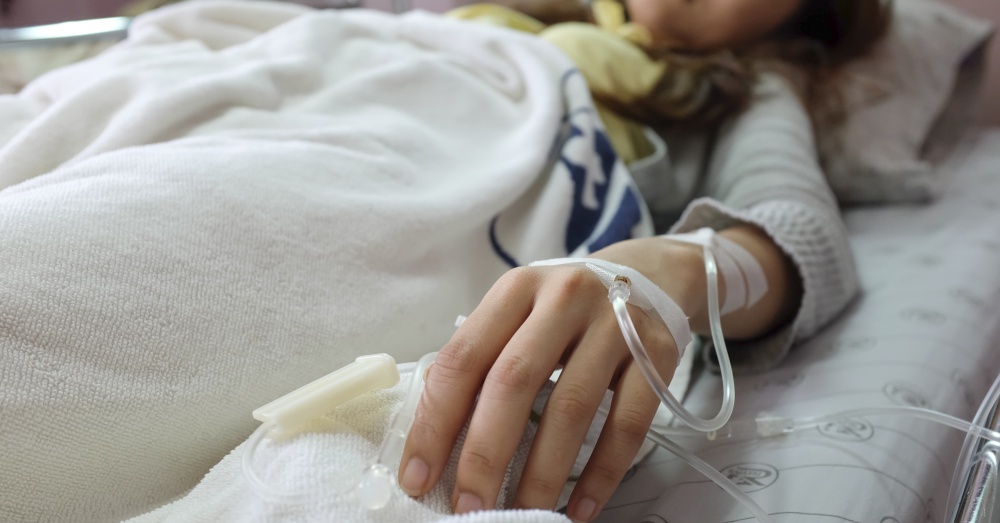
10 Common Chemo Drugs and What They Do
The prospect of undergoing chemotherapy for cancer can be terrifying — especially when the drugs themselves have daunting, hard-to-pronounce names, and the same drug has a brand name and a chemical name. There are more than 100 different types of chemo drugs and some are prescribed jointly while others are only given alone. Why are there so many kinds, and how do your doctors know which one is right for you and your specific type of cancer?
We’re here to help clear that up. Chemotherapy works by targeting cells at specific points in the cell cycle. Since cancer cells form more quickly than normal cells, the cancerous ones will be more readily destroyed by chemo than normal cells, though some normal cells will be affected (which is what side effects are).
Usually, at least two or three chemo drugs are used in combination with each other when treating localized cancer, while only one is commonly used at a time for advanced stages. There is no drug or combination that’s considered “the best” — your doctors will discuss the most promising treatment plan for you based on your stage, potential side effects, how the drugs will interact with each other, and more.
We’ll list several of the most common types of chemo, and explain their effect on cancer cells and your body. Common side effects for any type of chemotherapy include low blood count and an increased risk of blood clots. In addition, women are advised not to get pregnant.

10. Chemical: Cyclophosphamide / Brand: Cytoxan (C)
How it works:
Cytoxan is a type of alkylating agent that damages the DNA of cancer cells, making them unable to divide and causing cell death. It is typically administered after surgery (adjuvant) and other treatments, but can be given before (neoadjuvant) to reduce the size of advanced tumors before surgery. Most often it is used in combination with other chemo treatments, especially Adriamycin (AC) or Taxotere (ACT).
Types of breast cancer treated:
-Early stage: cancer hasn’t spread
-Locally advanced: cancer has spread to lymph nodes and other tissues in the chest or neck
-Metastatic: cancer has spread to other organs
Pill or IV:
Taken orally or intravenously.
Most common side effects:
Nausea and vomiting; mouth sores; hair loss; loss of appetite; bowel issues; irregular menstruation.
Common combinations using Cytoxan:
- AC: Adriamycin (A) & Cytoxan (C)
- ACT: Adriamycin (A) & Cytoxan (C) followed by Taxol (T)
- ACT: Adriamycin (A) & Cytoxan (C) followed by Taxotere (T)
- TAC: Taxotere (T) & Adriamycin (A) and Cytoxan (C)
- EC: Ellence (E) & Cytoxan (C)
- CMF: Cytoxan (C) & Maxtrex (M) & 5-fluorouracil (5-FU)
- E-CMF: Ellence (E) & Cytoxan (C) Maxtrex & (M) & 5-fluorouracil (5-FU)
- FEC: 5-fluorouracil (5-FU) & Ellence (E) & Cytoxan (C)
- FEC-T: 5-fluorouracil (5-FU) & Ellence (E) & Cytoxan (C) & Taxotere (T)

9. Chemical: Eribulin / Brand: Halaven
How it works:
Halaven is a type of microtubule inhibitor, which interferes with a transportation component in cancer cells called microtubulin so that the cells stop dividing and die. It is typically given after other chemotherapy drugs like anthracyclines and taxanes have failed. It’s derived from a type of sea sponge.
Types of breast cancer treated:
-Locally advanced: cancer has spread to lymph nodes and other tissues in the chest or neck
-Metastatic: cancer has spread to other organs
Pill or IV:
Taken intravenously.
Most common side effects:
Nausea and vomiting; sore mouth; fatigue; hair loss; effects on fertility; numbness and tingling in hands and feet; heart changes; bowel problems.
8. Taxanes:
Chemical: Paclitaxel / Brand: Taxol (T)
Chemical: Docetaxel / Brand: Taxotere (T)
Chemical: Albumin-bound paclitaxel / Brand: Abraxane
How it works:
Taxanes interfere with the ability of cancer cells to divide. They are typically administered after surgery and other treatments like hormone therapy and radiation, but can sometimes be given before. Abraxane is typically only used for advanced breast cancer. Taxanes are often used in combination with other chemo drugs.
Taxotere and Taxol contain solvents so that the active ingredient (paclitaxel) can enter the bloodstream, which can cause poor reactions while being administered. Because of this, you may be given other medications prior to your treatment to offset the side effects. Abraxane, on the other hand, is easier on the body because the paclitaxel is suspended in a protein called albumin, and you may not require any other medication to offset its effects.
Types of breast cancer treated:
-Early stage: cancer hasn’t spread
-Local recurrence: has come back to area of original sites but hasn’t spread
-Locally advanced: cancer has spread to lymph nodes and other tissues in the chest or neck
-Metastatic: cancer has spread to other organs
Pill or IV:
Taken intravenously.
Most common side effects:
Hair loss; numbness and tingling in hands and feet; painful muscles and joints; nausea and vomiting; skin reactions anywhere on body; sore mouth; fatigue; bowel issues; swelling or fluid retention; chemo brain; low blood pressure.
Common combinations using taxanes:
- ACT: Adriamycin (A) & Cytoxan (C) followed by Taxol (T)
- ACT: Adriamycin (A) & Cytoxan (C) followed by Taxotere (T)
- TAC: Taxotere (T) & Adriamycin (A) and Cytoxan (C)
- FEC-T: 5-fluorouracil (5-FU) & Ellence (E) & Cytoxan (C) & Taxotere (T)
- TC: Cytoxan (C) & Taxotere (T)
- TCH: Taxotere, carboplatin (Paraplatin) and Herceptin (only used for HER2-positive breast cancer)
- TCHP: Taxotere, carboplatin (Paraplatin), Herceptin and Perjeta (only used for HER2-positive breast cancer)
- TH: Taxol and Herceptin (only used for HER2-positive breast cancer)
- THP: Taxol, Herceptin and Perjeta (only used for HER2-positive breast cancer)

7. Chemical: Methotrexate / Brand: Maxtrex (M)
How it works:
Maxtrex is a type of antimetabolite, which gets absorbed into cancer cells because it can mimic other components of the cell. Once it’s in, it prevents the cell from dividing and causes cell death. It is often used in combination with other chemotherapies.
Types of breast cancer treated:
-Early stage: cancer hasn’t spread
-Metastatic: cancer has spread to other organs
Pill or IV:
Taken intravenously.
Most common side effects:
Diarrhea; nausea and vomiting; sore mouth; joint pain; skin changes at infusion site; swelling in feet & legs; loss of appetite; hair loss; irregular menstruation.
Common combinations using Maxtrex:
- CMF: Cytoxan (C) & Maxtrex (M) & 5-fluorouracil (5-FU)
- E-CMF: Ellence (E) followed by Cytoxan (C) Maxtrex & (M) & 5-fluorouracil (5-FU)

6. Chemical: 5-fluorouracil (5-FU or F) / Brand: Adrucil
How it works:
5-FU is a type of antimetabolite, which gets absorbed into cancer cells because it can mimic other components of the cell. Once it’s in, it prevents the cell from dividing and causes cell death. It’s often used in combination with other chemotherapies, and can be used for any stage of cancer as well as on TNBC (Triple Negative Breast Cancer).
Types of breast cancer treated:
-Early stage: cancer hasn’t spread
-Local recurrence: has come back to area of original sites but hasn’t spread
-Locally advanced: cancer has spread to lymph nodes and other tissues in the chest or neck
-Metastatic: cancer has spread to other organs
Pill or IV:
Taken intravenously.
Most common side effects:
Nausea and vomiting; sore mouth; loss of appetite; vision problems; taste changes; hand-foot syndrome; irregular menstruation.
Common combinations using 5-FU:
- CMF: Cytoxan (C) & Maxtrex (M) & 5-fluorouracil (5-FU)
- E-CMF: Ellence (E) & Cytoxan (C) Maxtrex & (M) & 5-fluorouracil (5-FU)
- FEC: 5-fluorouracil (5-FU) & Ellence (E) & Cytoxan (C)
- FEC-T: 5-fluorouracil (5-FU) & Ellence (E) & Cytoxan (C) & Taxotere (T)

5. Chemical: Capecitabine / Brand: Xeloda
How it works:
Xeloda is a type of antimetabolite, which gets absorbed into cancer cells because it can mimic other components of the cell. Once it’s in, it prevents the cell from dividing and causes cell death. Xeloda is unique in that it is inactive when ingested; then liver and cancer cell enzymes convert it into 5-fluorouracil. This way, the medicine is more concentrated when it gets to the cancerous tissue and has less of an effect on healthy tissue. It’s typically used for metastatic breast cancer that has stopped responding to Taxol, Taxotere, and Adriamycin, but may be used in conjunction with those drugs as well.
Types of breast cancer treated:
-Locally advanced: cancer has spread to lymph nodes and other tissues in the chest or neck
-Metastatic: cancer has spread to other organs
Pill or IV:
Taken orally.
Most common side effects:
Diarrhea; hand-foot syndrome; nausea and vomiting; sore mouth; loss of appetite; fatigue; hair loss; dehydration.
4. Chemical: Gemcitabine / Brand: Gemzar
How it works:
Gemzar is a type of antimetabolite, which gets absorbed into cancer cells because it can mimic other components of the cell. Once it’s in, it prevents the cell from dividing and causes cell death. It can be given on its own, but is usually given along with another chemotherapy drug, either carboplatin (Paraplatin) or Taxol.
Types of breast cancer treated:
-Locally advanced: cancer has spread to lymph nodes and other tissues in the chest or neck
-Metastatic: cancer has spread to other organs
Pill or IV:
Taken intravenously.
Most common side effects:
Hair loss; sore mouth and taste changes; nausea and vomiting; fatigue; fertility (causes periods to stop temporarily or permanently); menopausal symptoms; sore eyes and runny nose; skin problems; flu-like symptoms; breathlessness; liver and kidney problems.

3. Platinum agents:
Chemical: Carboplatin / Brand: Paraplatin
Chemical: Cisplatin / Brand: Platinol
How it works:
Paraplatin and Platinol actually contain platinum, and damage the DNA of cells to the point where they cannot repair themselves, causing cell death. They are typically given in combination with other chemo types after surgery, but can also be given prior. They may also be used in clinical trials for those with Triple Negative Breast Cancer (TNBC) or those have a BRCA gene mutation.
Types of breast cancer treated:
-Early stage: cancer hasn’t spread
-Locally advanced: cancer has spread to lymph nodes and other tissues in the chest or neck
-Metastatic: cancer has spread to other organs
Pill or IV:
Taken intravenously.
Most common side effects:
Nausea and vomiting; fatigue; chemo brain; fertility (causes changes in ovaries); menopausal symptoms.
Common combinations using platium agents:
- TCH: Taxotere, carboplatin (Paraplatin) and Herceptin (only used for HER2-positive breast cancer)
- TCHP: Taxotere, carboplatin (Paraplatin), Herceptin and Perjeta (only used for HER2-positive breast cancer)

2. Chemical: Vinorelbine / Brand: Navelbine
How it works:
Navelbine is a type of vinca alkaloid, which stops cell reproduction and destroys cancer cells altogether by interfering with DNA. It’s derived from the periwinkle plant, and is often used alone.
Types of breast cancer treated:
-Locally advanced: cancer has spread to lymph nodes and other tissues in the chest or neck
-Metastatic: cancer has spread to other organs
Pill or IV:
Taken orally or intravenously.
Most common side effects:
Nausea and vomiting; sore mouth; fatigue; bowel issues; numbness and tingling in hands and feet; skin changes at infusion site; liver changes.

1. Anthracyclines:
Chemical: Doxorubicin / Brand: Adriamycin (A)
Chemical: Epirubicin / Brand: Ellence (E)
Chemical: Pegylated liposomal doxorubicin / Brand: Doxil
How it works:
Anthracyclines damage the DNA of cancer cells, making them unable to divide and causing cell death. They can be either neoadjuvant or adjuvant and are typically used in combination with other chemo types, especially Cytoxan (Cyclophosphamide). Adriamycin is called “the red devil” because of its bright red color.
Use of anthracyclines has decreased over the years. High usage can result in cardiac damage and they have severe side effects. Now anthracyclines are paired with other drugs and given at a much lower dose to reduce toxicity.
The combination of Herceptin (an immunotherapy that targets only HER2-positive cancers) with anthracyclines can cause severe cardiac dysfunction and is not recommended.
Types of breast cancer treated:
-Early stage: cancer hasn’t spread
-Locally advanced: cancer has spread to lymph nodes and other tissues in the chest or neck
-Metastatic: cancer has spread to other organs
Pill or IV:
Taken intravenously.
Common side effects:
Nausea and vomiting; mouth sores, hair loss; pain in the injection site; fatigue; poor concentration; bladder irritation; and menopausal symptoms.
Common combinations using anthracyclines:
- AC: Adriamycin (A) & Cytoxan (C)
- ACT: Adriamycin (A) & Cytoxan (C) followed by Taxol (T)
- ACT: Adriamycin (A) & Cytoxan (C) followed by Taxotere (T)
- TAC: Taxotere (T) & Adriamycin (A) and Cytoxan (C)
- EC: Ellence (E) & Cytoxan (C)
- E-CMF: Ellence (E) & Cytoxan (C) Maxtrex & (M) & 5-fluorouracil (5-FU)
- FEC: 5-fluorouracil (5-FU) & Ellence (E) & Cytoxan (C)
- FEC-T: 5-fluorouracil (5-FU) & Ellence (E) & Cytoxan (C) & Taxotere (T)